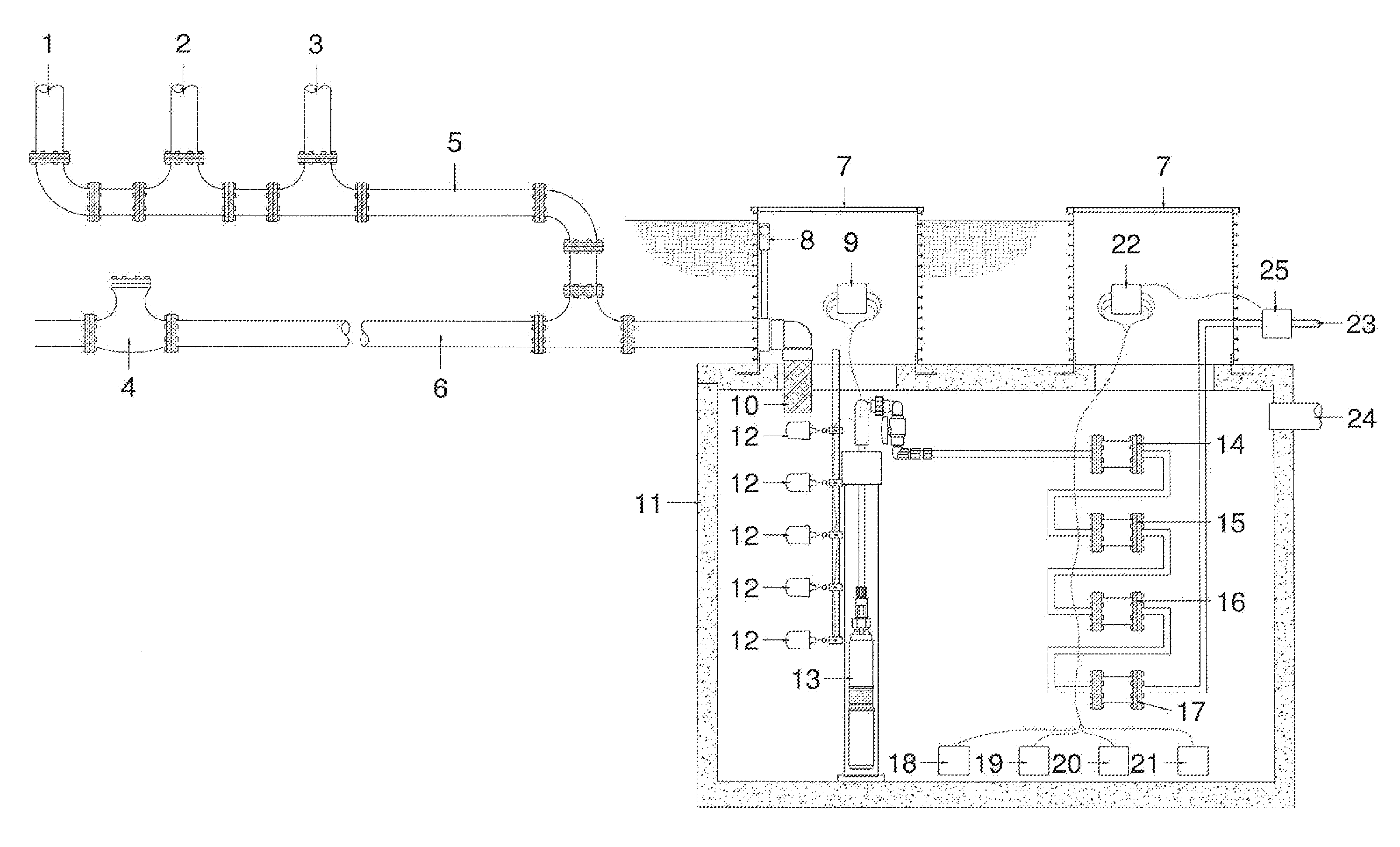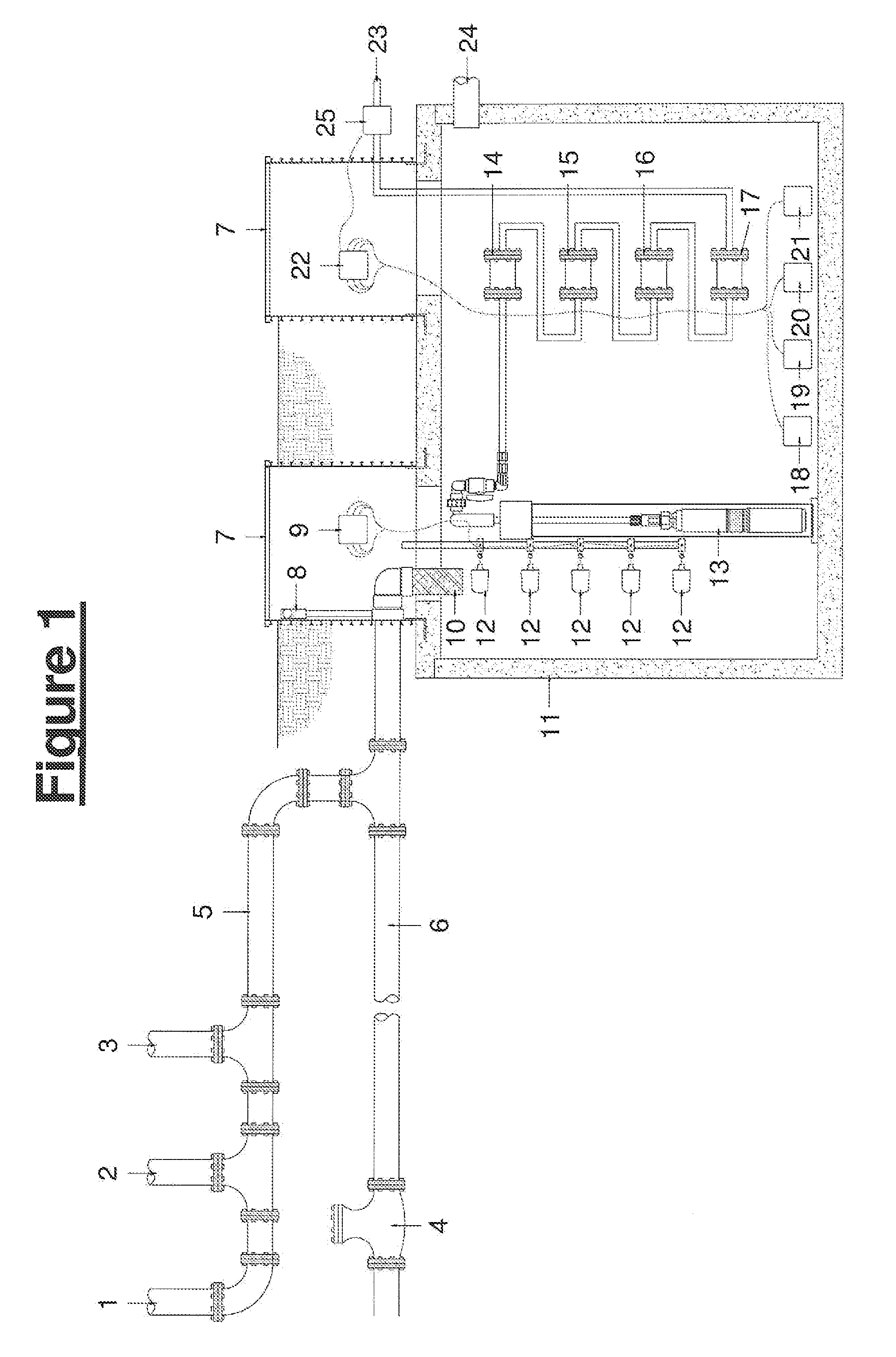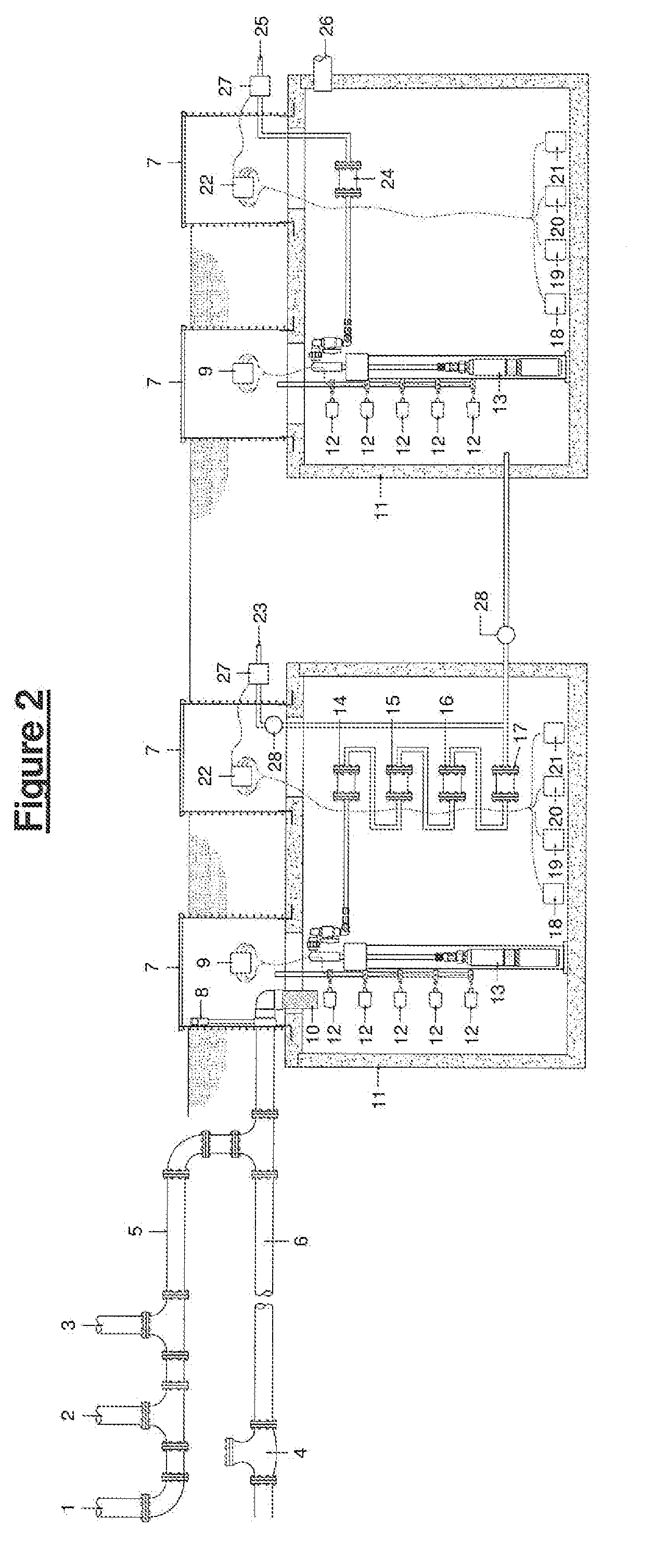Process for Rain Water, HVAC Condensate and Refrigeration Blowdown/Bleed Blowdown/Bleed Water Recovery, Water Quality Monitoring, Real Time Water Treatment and Utilization of Recovered Water
a technology of hvac condensate and refrigeration, which is applied in the field of rain water, can solve the problems of inability to the water management system adopted by different regions cannot meet the growing demands of the world population, and the design is more difficult, so as to achieve efficient and effective use of water, efficient use of water, and efficient use
- Summary
- Abstract
- Description
- Claims
- Application Information
AI Technical Summary
Benefits of technology
Problems solved by technology
Method used
Image
Examples
Embodiment Construction
[0211]The invention is a fully integrated engineered system that includes equipment and process technologies for rain water, HVAC condensate and refrigeration blowdown / bleed water collection, conservation, and reutilization coupled with end use planning for recovered water. The water generated from air conditioning and refrigeration condensate can amount to substantial quantities. For example, an air conditioned 100,000 square foot warehouse or commercial retail store in southern California will typically generate several millions of gallons of condensate per year. If the facility has refrigeration or chiller units for food storage, then the refrigeration condensate generated would also be several millions of gallons per year. The condensate water that is presently generated is routinely disposed of into the either the storm drain or the waste water drain. The quantities of water that are available for capture and use make the present invention economically viable, as well as a supe...
PUM
| Property | Measurement | Unit |
|---|---|---|
| size | aaaaa | aaaaa |
| diameter | aaaaa | aaaaa |
| volumes | aaaaa | aaaaa |
Abstract
Description
Claims
Application Information
 Login to View More
Login to View More - R&D
- Intellectual Property
- Life Sciences
- Materials
- Tech Scout
- Unparalleled Data Quality
- Higher Quality Content
- 60% Fewer Hallucinations
Browse by: Latest US Patents, China's latest patents, Technical Efficacy Thesaurus, Application Domain, Technology Topic, Popular Technical Reports.
© 2025 PatSnap. All rights reserved.Legal|Privacy policy|Modern Slavery Act Transparency Statement|Sitemap|About US| Contact US: help@patsnap.com



